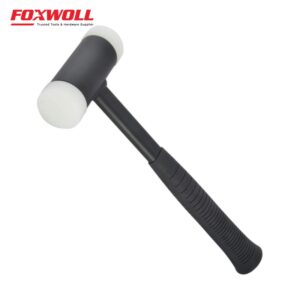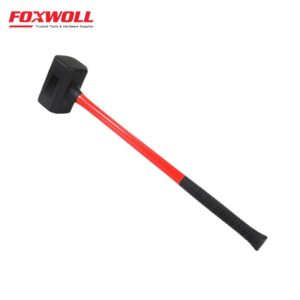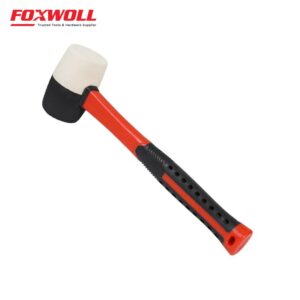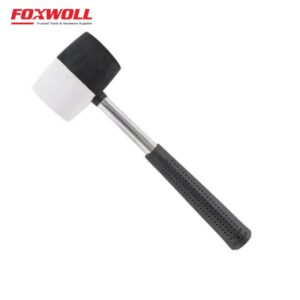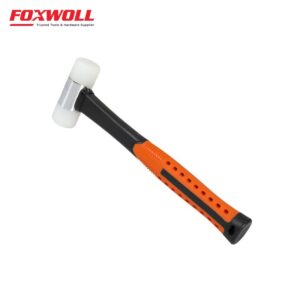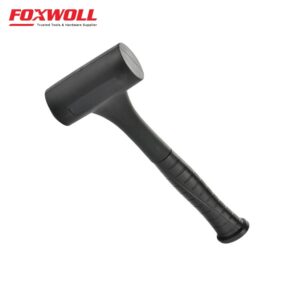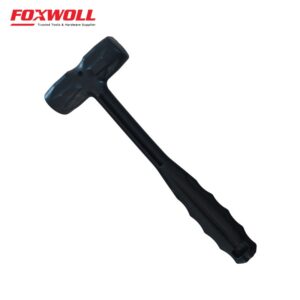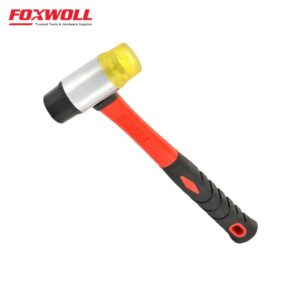Are you tired of struggling with screws that just won’t budge? Have you ever found yourself reaching for a screwdriver only to realize that it’s not the right one for the job? Don’t worry, you’re not alone. With so many different types of screwdriver heads out there, it can be confusing to know which one to choose for your project. In this blog post, we’ll cover everything you need to know about screwdriver heads, including the different types available and what they’re used for. We’ll also give you tips on how to choose the right type of screwdriver head and show you how having the right tool can make all the difference when it comes to getting the job done quickly and efficiently.
Understanding the Basics of a Screwdriver
A screwdriver is a multi-purpose tool used for twisting screws and fasteners. Its construction comprises of a handle and a shaft with a screwdriver tip, available in various sizes and types to fit different screw heads. The handle provides a secure grip that ensures optimal control during use, making it an indispensable tool for DIY projects and repairs. By mastering the fundamentals of using a screwdriver, you can take on any project in your toolbox with confidence. It’s worth noting that while some screws may require specific tools or techniques, having a reliable set of screwdrivers in your toolkit is always helpful when undertaking small home improvement projects or tackling minor repairs around your home or office.
Components of a Screwdriver
A screwdriver is made up of three essential parts: the handle, shaft, and screwdriver tip. The handle is ergonomically designed to provide a comfortable grip, often with a non-slip surface to prevent slipping during use. The shaft is a long cylindrical component that connects the handle to the screwdriver tip. The screwdriver tip is the end of the shaft and fits into the screw head.
All three components are integral to the functionality of a screwdriver and ensure precision, accuracy, and ease of use. A well-designed handle ensures that you can hold the tool comfortably for an extended period without any strain on your hand. Similarly, the shaft’s length and width should be suitable for the task at hand.
The screwdriver tip’s shape must match the shape of the screw head to avoid slipping or damaging it during use. Different types of tips are available for different types of screws, such as flathead and Phillips head screws. When choosing a screwdriver, it is important to consider its intended use and select one that suits your needs best.
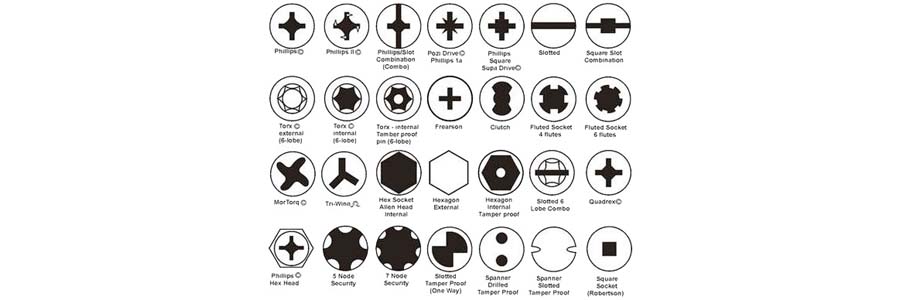
Importance of Different Screwdriver Heads
Having a variety of screwdriver heads is crucial for proper fastening. Different screwdriver heads are essential for matching the corresponding screw heads, as using the wrong one can damage the screw and make it difficult to remove or tighten. By choosing the right screwdriver head, you improve efficiency and reduce the risk of slippage. Additionally, having a versatile toolbox with different types of screwdriver heads allows you to tackle various projects effectively. Understanding the importance of different screwdriver heads ensures precision and successful outcomes.
Comprehensive Guide to 14 Types of Screwdriver Heads
Choosing the right screwdriver head is crucial for a successful project, and there are several types of screwdriver heads available to suit different screw types. The most commonly used types include flathead, Phillips, Pozidriv, Robertson, Torx, and Hexagon. Flathead screwdrivers have a single flat blade that fits into a slot in the screw head. Phillips screwdrivers have a cross-shaped tip that fits into a corresponding recess in the screw head. Pozidriv screwdrivers are similar to Phillips but have additional points of contact for better grip. Robertson screwdrivers have square-shaped tips that fit snugly into the recess of the screws. Torx screwdrivers have six-pointed star-shaped tips that provide excellent torque and grip. Lastly, hexagon or Allen key screwdrivers have hexagonal-shaped tips that fit into hexagonal recesses in the screws.
It is essential to select the right type of screwdriver head for your project to ensure proper usage and prevent damage to screws or the tool itself. A comprehensive guide to 14 types of screwdriver heads can help DIY enthusiasts and professionals choose the right tools for any project. In addition to selecting the correct type of screwdriver head, it is also important to consider factors such as size and quality before making a purchase. Investing in high-quality tools can save time and money in the long run by preventing damage and reducing the need for replacements.
Flathead or Slotted Head Screwdriver
Flathead screwdrivers are commonly used for screws with a straight slot on the head. They feature a single, flat blade and come in various sizes to fit different screw heads. This versatile tool is widely used in many applications, making it an essential item in any toolbox. Knowing how to use a flathead screwdriver properly is important for DIY projects as it ensures fastening that is both efficient and effective.
To use a flathead screwdriver correctly, begin by selecting the appropriate size for your screw head. Place the blade of the screwdriver into the slot on the top of the screw and apply downward pressure while turning counterclockwise to loosen or clockwise to tighten. It’s important to keep the screwdriver blade straight and centered in the slot to prevent slipping and damage to both the screw and tool.
When using a flathead screwdriver, be mindful of your grip and hand placement. Holding the handle firmly with one hand while applying pressure with the other hand provides better control over the tool. Avoid twisting your wrist or using excessive force as this can cause injury or strip the screw head.
In summary, using a flathead screwdriver correctly involves selecting the right size for your screw head, keeping it centered and straight in the slot, maintaining control over the tool with proper grip and hand placement, and avoiding excessive force or twisting of your wrist.

Phillips Screwdriver
The Phillips screwdriver is a popular tool used across different industries and applications. It features a cross-shaped tip with four arms, which matches the slot on the head of screws that are designed for it. The screwdriver comes in different sizes to match different screw heads, making it a versatile option for various projects.
Using a Phillips screwdriver correctly is crucial for the successful completion of projects. Inserting the screwdriver into the slot at an angle can cause damage to both the screw and the tool. To avoid this, ensure that the screwdriver is held directly perpendicular to the screw head. Additionally, applying too much pressure while turning can also result in damage or stripping of screws. It is important to apply steady pressure and use only as much force as required to turn the screw.
Overall, proper usage of a Phillips screwdriver can greatly improve efficiency and accuracy in completing projects.

Pozidriv Screwdriver
The Pozidriv screwdriver is an advanced version of the Phillips screwdriver, featuring additional slots on the tip that provide better grip and reduced cam-out. This type of screwdriver is commonly used in construction and woodworking projects because it offers increased torque and reduced slippage compared to Phillips screwdrivers. Choosing the right tool for your project is crucial, and understanding the differences between Pozidriv and Phillips screwdrivers can help you make an informed decision. While Pozidriv screwdrivers are ideal for heavy-duty applications, Phillips screwdrivers are better suited for lighter tasks. It’s essential to have both types in your toolkit to ensure that you have the right tool for any job.

Robertson (Square) Screwdriver
The Robertson screwdriver, also known as a square screwdriver, features a square-shaped tip. Invented by Peter Lymburner Robertson in Canada, this type of screwdriver is widely used in woodworking and construction projects. It offers excellent torque transfer and reduced cam-out, making it a popular choice among Canadian DIYers and professionals. Understanding how to use a Robertson screwdriver properly is essential for achieving precise results in your projects. Remember to use the right size of the tip and apply clockwise force for optimal performance.

Torx (Star) Screwdriver
The Torx screwdriver is easily recognizable with its unique star-shaped tip and multiple arms. This distinctive design guarantees greater torque transfer and reduced slippage, making it a popular choice in various industries such as electronics, automotive, and appliance manufacturing. One of the key benefits of using a Torx screwdriver is its superior resistance to cam-out compared to other types of screwdrivers. It is essential to know how to use a Torx screwdriver accurately for different applications.
To use a Torx screwdriver correctly, you need to ensure that the size of the tool matches the size of the screw head. Insert the tip into the screw head and apply pressure while turning it clockwise or anti-clockwise depending on the direction specified by the manufacturer. Avoid applying too much pressure as this may cause damage to both the tool and the screw head.
When working on delicate electronic devices, it’s important to be gentle while using a Torx screwdriver. Additionally, always choose high-quality tools from reputable manufacturers to avoid damaging your equipment or risking personal injury due to tool failure.
Overall, knowing how to use a Torx screwdriver correctly can help you achieve more precise results and make your work more efficient. It is an excellent investment for anyone who regularly works with screws in their profession or hobbies.

Hexagon (Hex) Screwdriver
The hexagon or hex screwdriver features a hexagonal-shaped tip and is commonly used in furniture construction and assembly. It provides a secure grip and enhanced torque transfer when used with screws that have a corresponding hexagonal recess on the head. Understanding how to use a hex screwdriver properly is essential for DIY furniture projects. It’s a valuable tool to have in your toolbox, especially for working with hex-head screws. With its precision and ability to transfer torque effectively, the hex screwdriver is a must-have for any DIY enthusiast.

Spanner Driver
A spanner driver, also known as a nut driver, is a tool used for tightening and loosening hexagonal nuts and bolts. It comes in different sizes to fit various nuts and bolts and is commonly used in the automotive and machinery industries. Spanner drivers can be manual or powered by a drill or impact driver. It is essential to use the correct size spanner driver to avoid damaging the nut or bolt. By using a precision tool like a spanner driver, you can ensure a secure and efficient fastening process.

Frearson Driver
The Frearson driver, invented by John Frearson in the early 1900s, is a type of screwdriver that closely resembles a Phillips head. However, it has a sharper point and deeper grooves than its counterpart. This feature makes it an ideal choice for marine and woodworking applications as it reduces the chances of camming out or stripping the screw head. The Frearson driver comes in various sizes and can be used with both slotted and Phillips head screws, making it a versatile tool that can cater to different types of applications. Additionally, due to its unique design, it is also less prone to damage compared to other screwdrivers.

Japanese Industrial Standard (JIS) Screwdriver
Japanese Industrial Standard (JIS) screwdrivers are specifically designed to fit JIS screws, which are commonly utilized in Japanese electronics and machinery. Unlike Phillips head screws, JIS screws have a flatter tip that necessitates the use of a different type of screwdriver to prevent stripping or damaging the screw. JIS screwdrivers are available in various sizes and types, including flathead, Phillips, and Pozidriv. Using a JIS screwdriver can significantly reduce the risk of damage to screws and equipment, particularly in professional settings. It is crucial to select the appropriate size and type of JIS screwdriver for optimal effectiveness and efficiency.

Clutch Head (Bow Tie) Screwdriver
The clutch head, also known as the bow tie screwdriver, is a specialized tool used for specific screws. Its design features two opposing slots, resembling a bow tie. Primarily used in automotive and appliance repair, the clutch head was originally created to prevent tampering with machinery or equipment. To avoid damaging the screws or tools, it is crucial to use the correct size clutch head screwdriver. This unique screwdriver offers precision and control when working with clutch head screws.

Hex Socket Screwdriver
A hex socket screwdriver is designed specifically for hexagonal bolts or screws and is commonly used in the automotive and machinery industries. It’s crucial to have the right size hex socket screwdriver for each job, as they come in different sizes. The tip of a hex socket screwdriver is hollow, allowing it to fit securely over a hexagonal bolt head. Hex socket screwdrivers can be manual or electric, depending on the requirements of the task at hand.

Battery-Operated Screwdriver
Battery-operated screwdrivers are portable and convenient, making them ideal for quick projects and on-the-go repairs. When choosing a battery-operated screwdriver, look for one with adjustable torque settings to avoid over-tightening or stripping screws. It’s also important to consider the battery life and charging time to ensure that the screwdriver is always ready for use. Some models may even come with additional features like LED lights or magnetic tips for easier screw placement. With their versatility and ease of use, battery-operated screwdrivers are a valuable addition to any toolbox.

Magnetic Screwdriver
Magnetic screwdrivers are equipped with a magnetic tip that securely holds screws in place, preventing them from falling off during the installation process. These versatile tools come in various sizes and types of heads, including Phillips, flathead, Torx, and hex, catering to different screw types. They are particularly useful when working in tight spaces or overhead, as they prevent screws from getting lost or out of reach. Some magnetic screwdrivers even offer replaceable tips, ensuring cost-effectiveness and versatility. It’s important to exercise caution while using them around electronic components and delicate surfaces to avoid magnetization or damage.

Ratcheting Screwdriver
Ratcheting screwdrivers offer a fast and efficient way to tighten or loosen screws. They feature a mechanism that allows the user to turn the screwdriver in one direction, while the screwdriver head rotates in both directions. These screwdrivers come in manual and electric options, making them versatile for different tasks. Ideal for jobs that require multiple turns of the screwdriver, ratcheting screwdrivers are a valuable addition to any toolbox. With their precision and convenience, they make working with various types of screws a breeze.

How to Choose the Right Type of Screwdriver Head?
Selecting the appropriate screwdriver head is crucial to getting the job done efficiently. To begin with, it is essential to identify the type and size of the screw. The shape of the screw head should then be matched with the corresponding shape of the screwdriver head. Durability is also a critical factor in choosing a suitable material. A comfortable grip ensures that you can use the screwdriver for extended periods without straining your hand. By selecting a well-fitted and comfortable screwdriver head, you can ensure easier handling and better results for your project. Additionally, investing in a set of interchangeable screwdriver heads can provide versatility for future projects with different types of screws and sizes.
Factors to Consider
When choosing a screwdriver head, there are several factors to consider. First and foremost, you need to ensure that the size of the screwdriver head matches the size of the screw you are working with. Additionally, different shapes of screwdriver heads are designed for different types of screws, so it’s important to choose the right shape for the task at hand. The material of the screwdriver head should also be taken into account, as durability and longevity are key factors. It’s crucial to check the compatibility of the screwdriver head with your screwdriver handle to avoid any issues during use. Finally, you should consider the cost of the screwdriver head and find a balance between quality and affordability.
What Does Each Type of Screwdriver Head Offer?
When it comes to screwdrivers, there are several types available, each designed for a specific purpose. Flathead screwdrivers feature a single slot head and are best suited for basic screws. On the other hand, Phillips screwdrivers, with their cross-shaped heads, are commonly used in electronics. If you’re working on cars or motorcycles, Torx screwdrivers with star-shaped heads would be the perfect fit. Hex screwdrivers, with their hexagonal heads, are best suited for bolts and can be found in many different sizes to accommodate various bolt sizes. It’s important to choose the right type of screwdriver for your project to ensure you get the job done correctly and efficiently.
How Can the Right Screwdriver Head Make a Difference?
Using the right screwdriver head is crucial to avoid damaging the screws and materials, improve grip, and save time. If an incorrect head size is used, it can lead to stripped screws or even cause injuries. To prevent these issues, it’s essential to select the correct size and type of screwdriver for the job. Using a tool with a matching head size ensures that the screwdriver fits snugly into the screw slot preventing any slippage or damage. Furthermore, using a magnetic screwdriver can make the task easier by holding onto small screws and preventing them from getting lost while working on intricate projects. By using the appropriate screwdriver head and taking necessary precautions, you can ensure a successful outcome for your project while avoiding potential mishaps.
Conclusion
In conclusion, having a good understanding of the different types of screwdriver heads is essential for any DIY enthusiast or professional. The right screwdriver head can make all the difference in terms of efficiency, accuracy, and overall success of your projects. Whether you’re working with slotted screws, Phillips screws, Torx screws, or any other type, having the appropriate screwdriver head ensures a secure and proper fit, minimizing the risk of damage to the screw or the surrounding materials. So, next time you’re faced with a project that requires a specific type of screwdriver head, refer back to this comprehensive guide to make the right choice. Happy screwdriver!

